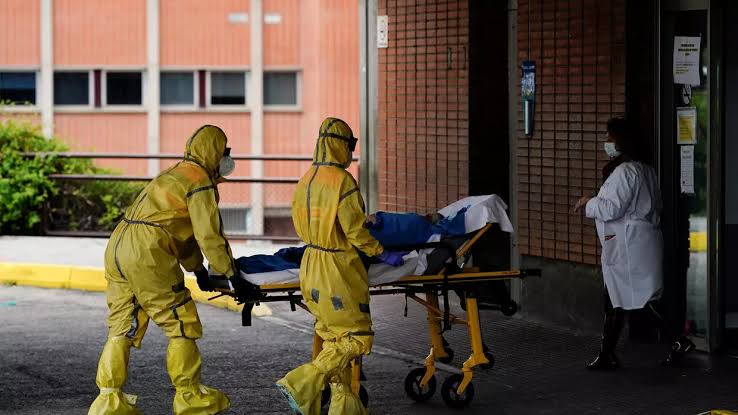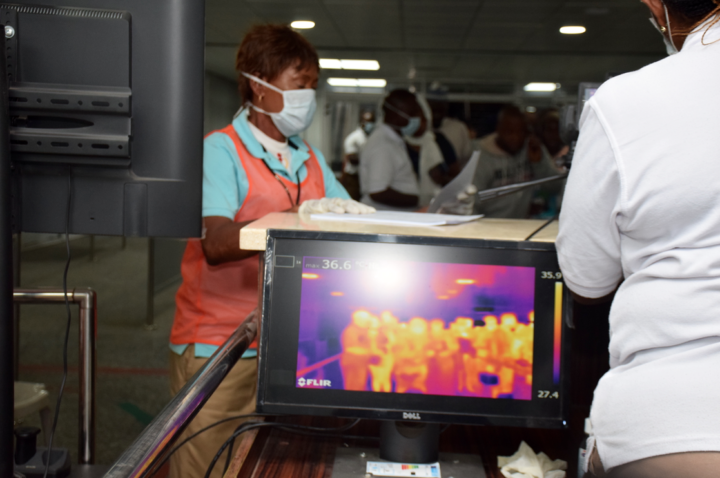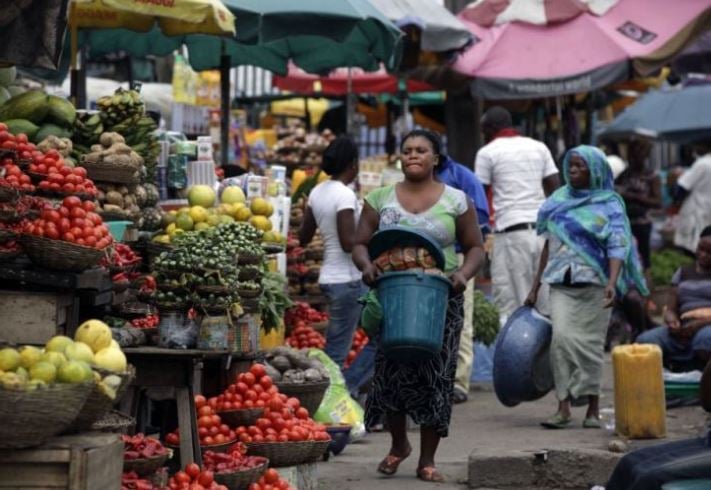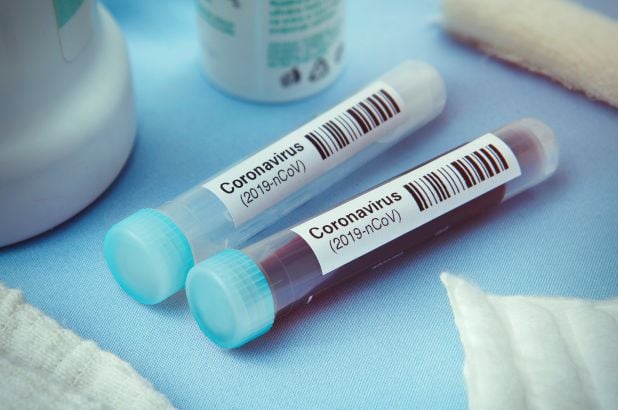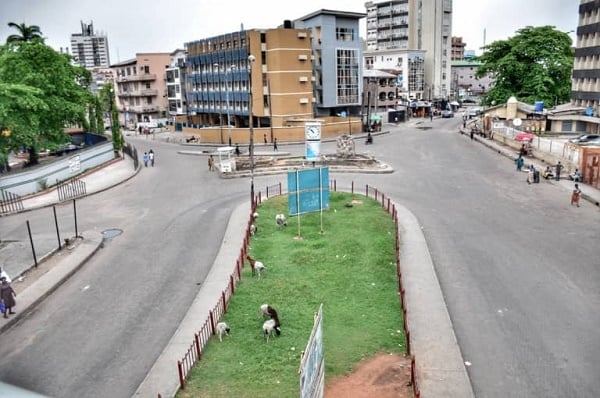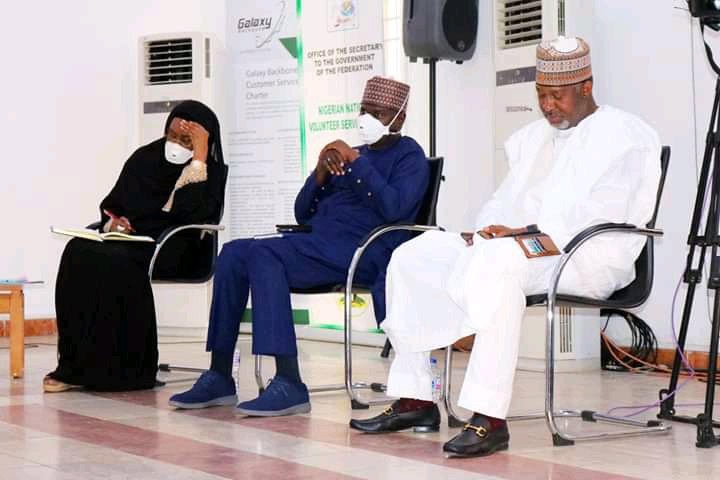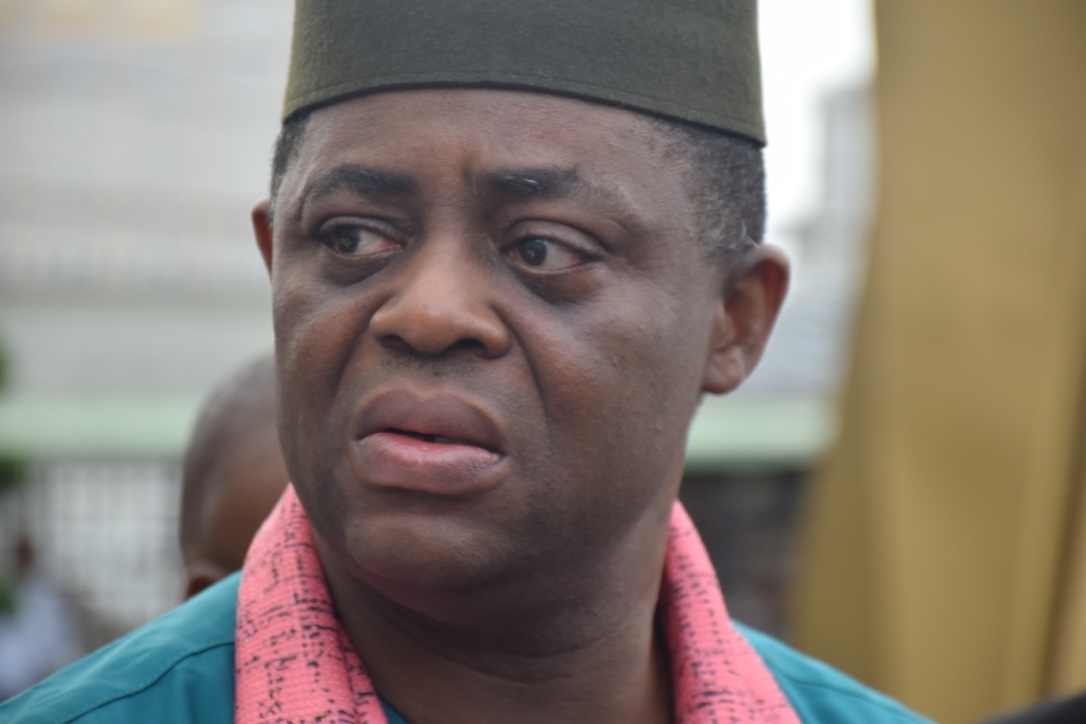Healthcare workers bring a coronavirus patient to hospital in Leganes, near Madrid, 11 April 2020. The death toll from the disease rose Sunday, after dropping for three straight days. © Juan Medina/Reuters
BY SOLA AFOLAYAN
The year 2020 brought with it high hopes that is typical of every new year. But right on its heels, was a virus-severe acute respiratory syndrome coronavirus 2 (SARS-CoV-2), which caused the coronavirus disease. Given the high rate of transmission and no official cure or vaccination in sight, a global pandemic was declared.
The disease, also known as COVID-19, appeared to have stealthily caught up on our busy lives, stopped us in our tracks, and meted a blinding punch to the face. Its impact continues to increase and stick like a monkey on our backs. Currently, there is a global total of 2,544,792 confirmed cases and 175,694 deaths (WHO;23 April).
Whilst earliest COVID-19 case was recorded on 17 November 2019, in China, Nigeria did not record its index case until 27 February. Notwithstanding the three months window, no scenario planning could have prepared for the impact on Nigeria; a country with a mono-resource economy.As of 23 April, the country has recorded a total 981 confirmed cases and 31 deaths (NCDC, 23 April).
Advertisement
It is said that when Nigeria changes its targeted testing approach and makes available more testing kits and centres, the numbers of confirmed cases will not only increase, but causalities as well. Unfortunately, the longer this takes, the slimmer the opportunity to nip community transmission in the bud. And it appears Kano State; with a population of about 13.4 million people, is at the cusp already.
Few days ago, a national newspaper reported that within a couple of days, about 150 people died from an ‘unknown’ cause in the State. The Honourable Minister of Health, Ehanire Osagie had warned few weeks back that there are early evidence of sustained community transmission following 30 per cent of cases have incomplete epidemiological information,an indicator for widespread transmission.
There is a lot to be worried aboutwith community transmission. And rightly so for a countrylike Nigeria, which has a population of over205 million people, with approximately 100 million who are multidimensionally deprived and poor. It is no wonder, Melinda Gates, the co-chair of the Bill and Melinda Gates Foundationalarmed that “I see dead bodies all over Africa”. She alluded this to the Foundation’s work experience in the continent: poor health care systems, inadequate housing to support need for social distancing, and lack of access to clean water for personal hygiene.
Advertisement
The University of Oxford Poverty and Human Development Initiative (OPHI), seems to validate this assertion. Using a 2016-17 household survey, OPHI discovered that of the 100million poor people, about 39million of them are susceptible to contracting COVID-19. Also, its disaggregated projection by State show five States are most at risk. That is, Borno (4.1 million), Katsina (4 million), Kano (3.8 million), Kaduna (2.6 million), and Abuja (82 thousand).
The Oxfordprojectionis made on the premise that people are at high risk of contracting COVID-19 when they are already identified as multidimensionally poor and in addition, experience overlapping deprivations in three areas: access to quality water, nutrition, and what they cook with.
There is a strong correlation-causality that can be seen deduced here. Access to quality water is crucial given unsafe drinking water is linked to much of the global disease burden and weakened immune systems. Likewise, undernutrition, is strongly associated with weakened immune systems, morbidity, and mortality- particularly among young children. Lastly, deprivation in clean cooking fuel, relates to indoor air pollution and acute respiratory infection, implying an increased risk to COVID-19 which attacks the lungs.
Given this insight, and as the country gears up for a full-blown outbreak, firm decisions and actions need to be taken. The starting point however should be massive grassroot campaign and broadcast to rural communities, where most still think they are immune to the disease. While our cultural and religious diversity has been enriching, unfortunately, its resulting fatalistic tendencies will not serve nor save us this time. In God we trust, but in this case, we need data. Policies, palliative measures and stimulus packages should be evidence-based, and data driven.
Advertisement
We know the virus will be with us for a long time. For this, we need a brave new world; one with bold leadership and resilient humans who are ready to work together for everyone to stay alive.There is no gainsaying it- no progress will be made without audacious policy changes.
As we prepare for a post-COVID-19 world, couple of ideas and views (personal) are shared here, but primarily on health care sector. These recommendations are made with the intention of influencing ongoing discussions by decision makers and policy influencers such as the Presidential Task Force (PTF), the Economic Sustainability Committee (ESC), or the Private Sector task force, that is, Coalition Against COVID-19 (CACOVID).
Evidence suggests that majority of Nigerians are only one illness from falling into poverty or further into abject poverty. This is the reason why any efforts made for inclusive health coverage for all will yield expected outcomes.The health sector has been the most hit given that pre-COVID-19, barely 20% of the 30,000 primary health care centres (PHCs) in the country was functional.
A two-pronged demand-supply approach will be required to strengthen the system andimprove health outcomes.This can be achieved through public private partnerships (PPP) where States concession already built primary health care centres (PHCs), to be managed by the private sector. Already, this model is being implemented in two States: Delta and Lagos, wherePharmAccess, a strategic partner of MSD for Mothers, was engaged to identify private healthcare investors, provide accreditation and set standards that define package of care to be delivered. The private sector actors in turnsupply trained community-based health workers (CHWs) as well as provide quality drugs and other medical infrastructures- incentivized medical payment system, and stable electricity supply. This model could be replicated in other States leading to the acceleration of universal health coverage nationwide.
Advertisement
Meanwhile, at Federal level, within its social protection interventions, it is imperative for government to review ongoing projects with the aim of embedding within it, targeted health architecture. For instance, by introducing a school-based health insurance scheme in the National Home-Grown School Feeding Programme (NHGSFP), over 10 million pupils, and 100 thousand cooks in 35 States, could come under health insurance cover. This health cover incentives should be extended to the 500 thousand beneficiaries of Npower, and the additional 2 million, on the conditional cash transfer programme.
Asides those mentioned in this article, there are several other ideas out there being suggested by economists, and experts in the power, education, manufacture and technology sectors, which are as much valid. These and those suggested here on the health sector, could set the tone as we prepare for life, post COVID-19.
Advertisement
Sola, a graduate of Oxford University, is the founder, SHE Foundation (www.she.foundation); a social justice advocate. She tweets @OlusholaAO.
Advertisement
Views expressed by contributors are strictly personal and not of TheCable.
